9 start with B start with B
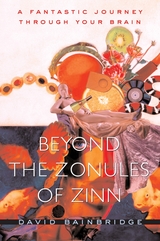
In his latest book, David Bainbridge combines an otherworldly journey through the central nervous system with an accessible and entertaining account of how the brain's anatomy has often misled anatomists about its function. Bainbridge uses the structure of the brain to set his book apart from the many volumes that focus on brain function. He shows that for hundreds of years, natural philosophers have been interested in the gray matter inside our skulls, but all they had to go on was its structure. Almost every knob, protrusion, canal, and crease was named before anyone had an inkling of what it did--a kind of biological terra incognita with many weird and wonderful names: the zonules of Zinn, the obex ("the most Scrabble-friendly word in all of neuroanatomy"), the aqueduct of Sylvius, the tract of Goll.
This uniquely accessible approach lays out what is known about the brain (its structure), what we can hope to know (its function), and what we may never know (its evolution). Along the way Bainbridge tells lots of wonderful stories about the "two pounds of blancmange" within our skulls, and tells them all with wit and style.

Robotic exoskeletons that allow stroke survivors to regain use of their limbs, 3D-printed replacement body parts, and dozens of other innovations still in schematic design are revolutionizing the treatment of debilitating injuries and nervous system disorders. What all these technologies have in common is that they are modeled after engineering strategies found in nature—strategies developed by a vast array of organisms over eons of evolutionary trial and error.
Eugene Goldfield lays out many principles of engineering found in the natural world, with a focus on how evolutionary and developmental adaptations, such as sensory organs and spinal cords, function within complex organisms. He shows how the component parts of highly coordinated structures organize themselves into autonomous functional systems. For example, when people walk, spinal cord neurons generate coordinated signals that continuously reorganize patterns of muscle activations during the gait cycle. This self-organizing capacity is just one of many qualities that allow biological systems to be robust, adaptive, anticipatory, and self-repairing. To exploit the full potential of technologies designed to interact seamlessly with human bodies, properties like these must be better understood and harnessed at every level, from molecules to cells to organ systems.
Bioinspired Devices brings together insights from a wide range of fields. A member of the Wyss Institute for Biologically Inspired Engineering, Goldfield offers an insider’s view of cutting-edge research, and envisions a future in which synthetic and biological devices share energy sources and control, blurring the boundary between nature and medicine.
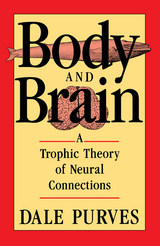
The major goal of developmental neurobiology is to understand how the nervous system is put together. A central theme that has emerged from research in this field over the last several decades is the crucial role of trophic interactions in neural assembly, and indeed throughout an animal's life. Trophic—which means nutritive—refers to long-term interdependencies between nerve cells and the cells they innervate.
The theory of trophic effects presented in this book offers an explanation of how the vertebrate nervous system is related to—and regulated by—the body it serves. The theory rationalizes the nervous system's accommodation, throughout life, to the changing size and form of the body it tenants, indicating the way connections between nerve cells change in response to stimuli as diverse as growth, injury, experience, and natural selection.
Dale Purves, a leading neurobiologist best known for his work on the formation and maintenance of synaptic connections, presents this theory within the historical setting of earlier ideas about neural organization—from Weiss's theory of functional reorganization to the chemoaffinity theory championed by Sperry. In addition to illuminating eighty years of work on trophic interactions, this book asks its own compelling questions: Are trophic interactions characteristic of all animals or only of those with complex nervous systems? Are trophic interactions related to learning? What does the trophic theory of neural connections imply about the currently fashionable view that the nervous system operates according to Darwinian principles?
Purves lays the theoretical foundation for practical exploration of trophic interactions as they apply to neural connections, a pursuit that will help us understand how our own nervous systems generate change. The ideas in this book not only enrich neurobiology but also convey the profound relevance of neuroscience to other fields of life science.

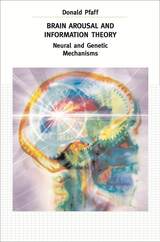
Arousal is fundamental to all cognition. It is intuitively obvious, absolutely necessary, but what exactly is it? In Brain Arousal and Information Theory, Donald Pfaff presents a daring perspective on this long-standing puzzle. Pfaff argues that, beneath our mental functions and emotional dispositions, a primitive neuronal system governs arousal. Employing the simple but powerful framework of information theory, Pfaff revolutionizes our understanding of arousal systems in the brain.
Starting with a review of the neuroanatomical, neurophysiological, and neurochemical components of arousal, Pfaff asks us to look at the gene networks and neural pathways underlying the brain’s arousal systems much as a design engineer would contemplate information systems. This allows Pfaff to postulate that there is a bilaterally symmetric, bipolar system universal among mammals that readies the animal or the human being to respond to stimuli, initiate voluntary locomotion, and react to emotional challenges. Applying his hypothesis to heightened states of arousal—sex and fear—Pfaff shows us how his theory opens new scientific approaches to understanding the structure of brain arousal.
A major synthesis of disparate data by a preeminent neuroscientist, Brain Arousal and Information Theory challenges current thinking about cognition and behavior. Whether you subscribe to Pfaff’s theory or not, this book will stimulate debate about the nature of arousal itself.
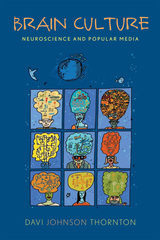
Brain Culture investigates the American obsession with the health of the brain. The brain has become more than a bodily organ, acquiring a near-mystical status. The message that this organ is the key to everything is everywhere--in self-help books that tell us to work on our brains to achieve happiness and enlightenment, in drug advertisements that promise a few tweaks to our brain chemistry will cure us of our discontents, and in politicians' speeches that tell us that our brains are national resources essential to our economic prosperity.
Davi Johnson Thornton looks at these familiar messages, tracing the ways that brain science and colorful brain images produced by novel scientific technologies are taken up and distributed in popular media. She tracks the impact of the message that, "you are your brain" across multiple contemporary contexts, analyzing its influence on child development, family life, education, and public policy. Brain Culture shows that our fixation on the brain is not simply a reaction to scientific progress, but a cultural phenomenon deeply tied to social and political values of individualism and limitless achievement.

Movement has long been considered the most obvious expression of brain activity and its correlative, mental activity. By studying movement, the neurophysiologist hopes to penetrate the interior of the living being and uncover the hidden source of action and its clues to the origin of life. We presume a role for the brain in movement—but should the brain be viewed simply as a machine that reacts to diverse stimuli, or is it an intelligent machine that organizes and controls not only itself but also the world around it?
Drawing upon the many disciplines that have contributed to brain research—anatomy, physiology, clinical neurology, psychology, psychiatry—Marc Jeannerod traces three centuries of ideas about movement and the brain. His critique of neural science takes into account the work of thinkers ranging from Descartes and Willis to Held, Hubel and Wiesel, Piaget and Chomsky. In his historical survey Jeannerod sees parallels between the influential neurological theories and dominating philosophical questions of the time: What is the nature of the soul? How does knowledge originate? What is the relation between the living organism and its milieu? Jeannerod's elegant arguments demonstrate that the “brain-movement problem” is the essential paradigm of the “brain-mind problem.” He advances a view of the neural organization of movement that has far-reaching implications for psychology and all neural sciences.
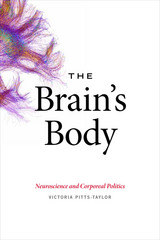
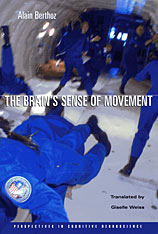
The neuroscientist Alain Berthoz experimented on Russian astronauts in space to answer these questions: How does weightlessness affect motion? How are motion and three-dimensional space perceived? In this erudite and witty book, Berthoz describes how human beings on earth perceive and control bodily movement. Reviewing a wealth of research in neurophysiology and experimental psychology, he argues for a rethinking of the traditional separation between action and perception, and for the division of perception into five senses.
In Berthoz’s view, perception and cognition are inherently predictive, functioning to allow us to anticipate the consequences of current or potential actions. The brain acts like a simulator that is constantly inventing models to project onto the changing world, models that are corrected by steady, minute feedback from the world. We move in the direction we are looking, anticipate the trajectory of a falling ball, recover when we stumble, and continually update our own physical position, all thanks to this sense of movement.
This interpretation of perception and action allows Berthoz, in The Brain’s Sense of Movement, to focus on psychological phenomena largely ignored in standard texts: proprioception and kinaesthesis, the mechanisms that maintain balance and coordinate actions, and basic perceptual and memory processes involved in navigation.
READERS
Browse our collection.
PUBLISHERS
See BiblioVault's publisher services.
STUDENT SERVICES
Files for college accessibility offices.
UChicago Accessibility Resources
home | accessibility | search | about | contact us
BiblioVault ® 2001 - 2024
The University of Chicago Press









